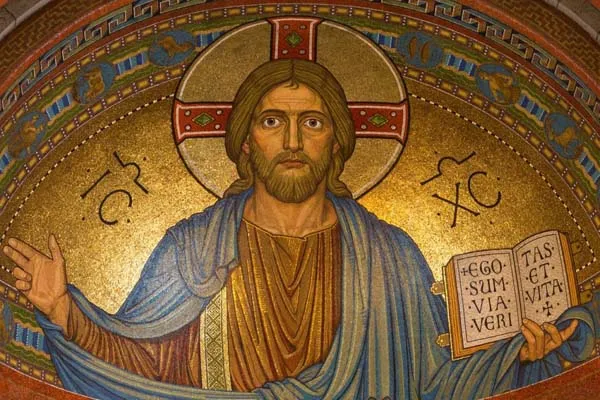10 Fascinating Facts About the Messiah of Christianity in Italy
The Messiah of Christianity in Italy has been at the heart of Italian faith, history, and culture for nearly two millennia. Known globally as Jesus Christ — or Gesù Cristo in Italian — He is revered as the Son of God and Savior of humanity in Christian belief. Italy, as the home of the Roman Catholic Church, has played a unique role in preserving and spreading His teachings throughout the world.
Who is the Messiah of Christianity?
In Christian theology, the Messiah is the promised “Anointed One” foretold in the Old Testament, believed to be sent by God to save humanity from sin. Jesus Christ fulfills this prophecy for Christians, His life and works documented in the New Testament of the Bible. His birth, crucifixion, and resurrection form the foundation of Christian faith.
In Italy, His image is omnipresent — in churches, cathedrals, frescoes, and sculptures created by some of the world’s greatest artists. The Vatican City, situated in the heart of Rome, serves as the epicenter of Catholicism and a global symbol of His message.
The Arrival of Christianity in Italy
Christianity first arrived in Italy during the 1st century AD, brought by early disciples and apostles such as Peter and Paul. According to historical records, both were martyred in Rome, solidifying the city’s importance as a spiritual hub. Over centuries, Italy became not just a follower of the Messiah’s teachings, but the very seat of Catholic authority.
For further reading on the spread of early Christianity, check our guide on Early Christian History.
The Messiah’s Cultural Influence in Italy
Italy’s art, architecture, and literature are deeply intertwined with the life and message of Jesus. From Michelangelo’s Pietà in St. Peter’s Basilica to Leonardo da Vinci’s The Last Supper in Milan, the Messiah’s image has been immortalized through the Renaissance and beyond.
Many of Italy’s public holidays, festivals, and processions celebrate events from His life — such as Easter, which commemorates the resurrection, and Christmas, which celebrates His birth. These traditions are not only religious observances but also cultural milestones that unite communities.
For an in-depth look at Italy’s Christian heritage sites, explore our list of Italian Pilgrimage Locations.
The Vatican – Center of the Messiah’s Legacy
The Vatican City is the smallest country in the world but holds the greatest spiritual authority for over 1.3 billion Catholics. As the residence of the Pope — the successor of Saint Peter — it serves as the administrative and theological heart of the faith.
Visitors can explore the official Vatican website for information on papal events, sermons, and museum collections, many of which are dedicated to the Messiah’s life and mission.
Papal Role in Preserving the Messiah’s Teachings
The Pope’s role is to safeguard and interpret the teachings of Jesus Christ for the modern era. Through encyclicals, speeches, and pilgrimages, Popes have addressed issues like poverty, peace, and moral guidance — all rooted in the Messiah’s message.
Symbolism of the Messiah in Italian Society
In Italy, the Messiah symbolizes not only salvation but also moral authority and cultural identity. Religious education in schools, public art, and community rituals all reflect His teachings. Even non-practicing Italians often view Jesus as a moral compass and symbol of compassion.
Key symbolic associations include:
- Forgiveness and Compassion: Seen in community outreach programs and charity work.
- Unity: Festivals and church services often serve as communal gatherings.
- Resilience: The enduring survival of Christian faith despite historical challenges.
Messiah of Christianity in Italy and Tourism
Italy is one of the world’s top destinations for religious tourism. Millions of visitors come each year to witness relics, sacred art, and historical churches associated with the Messiah.
Popular pilgrimage destinations include:
- St. Peter’s Basilica in Vatican City
- Basilica of Saint Francis of Assisi
- Cathedral of Florence (Duomo)
These sites are not just tourist attractions; they are living testaments to the Messiah’s influence over Italian life and spirituality.
Modern-Day Relevance
While Italy has seen a decline in church attendance in recent decades, the Messiah’s presence in public life remains strong. Events like papal audiences are broadcast worldwide, and religious festivals still draw massive crowds.
The teachings of Jesus are also referenced in discussions on social justice, migration, and interfaith dialogue, proving His relevance beyond strictly religious contexts.
How Italians Celebrate the Messiah’s Life Today
Celebrations are both religious and cultural. Easter week in Rome features solemn processions and papal masses, while small towns hold elaborate reenactments of the Passion of Christ. Christmas markets, nativity scenes (presepi), and midnight masses are widespread traditions.
For a guide on attending these events, read our article on Christian Festivals in Italy.
Conclusion
The Messiah of Christianity in Italy is far more than a religious figure; He is a central part of the nation’s history, art, and identity. From the Vatican’s grandeur to humble village churches, His presence is felt everywhere. Whether through centuries-old traditions or modern-day debates, His influence continues to shape Italian society.
For believers and historians alike, understanding the Messiah’s role in Italy is key to appreciating the nation’s cultural and spiritual heritage.


